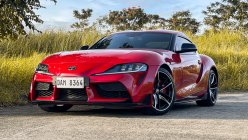For most who are knowledgeable about cars, the fourth-generation A80 Toyota Supra is a certified gem of a car. It is hailed by many as the best sports coupe the Japanese marque has ever made, and it is still sought after by car collectors, serious racers, and car enthusiasts all around the world.
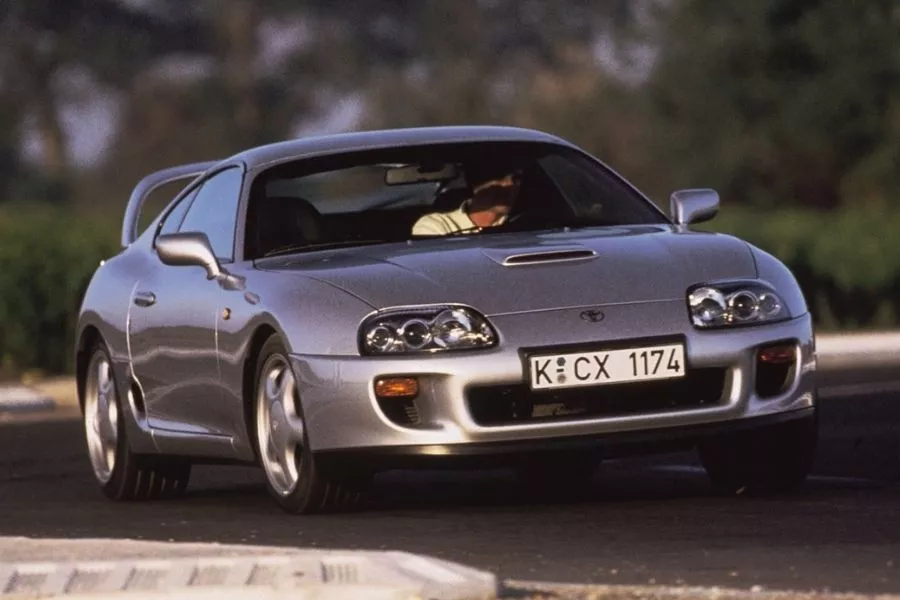
The Toyota Supra A80, otherwise known as the Mark IV Supra
In fact, a fresh low mileage example has more than doubled its value in the current used market. In the US alone, this Toyota-made sports car’s price currently hovers from 100K USD and above.
So why does the Supra carry so much respect in the car community? Why is it still living rent free in the minds of car dudes and gals to this day? Well, let’s talk about that.
Toyota Supra A80: It can take it
While we are sure that the A80 Supra’s exterior design and other mechanical bits are brilliant unto themselves, it’s the engine that made this car so great.
Now the Supra had two engines during its lifetime. Both however are within the 2JZ series with one being naturally-aspirated, and the other having twin turbos. Both are 3.0-liter inline-6 gasoline sipping powerhouses that consist of a cast-iron block and a lot of over engineering.
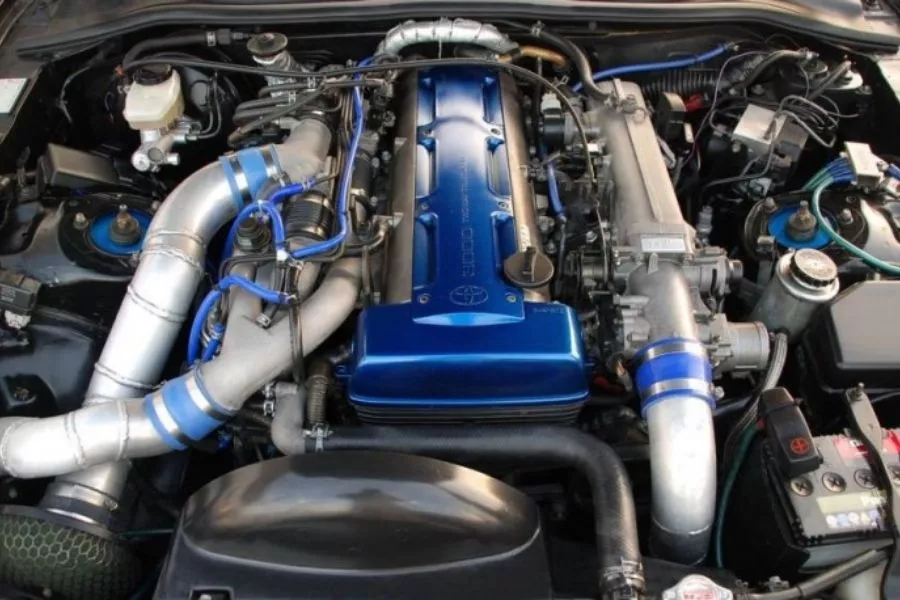
The legendary 3.0-liter inline-6 2JZ engine with some aftermarket parts
The latter part is further shown in the powerful 2JZ-GTE twin-turbo, which was the model’s second engine introduced later in 1991. Most of its parts including the crankshaft, connecting rods, and engine block were identical to the non-turbo variant. Toyota however gave it an air-to-air side-mounted intercooler, and additional oil spray nozzles.
With all those, the 2JZ-GTE was capable of producing up to 320 horsepower and 451 Nm of torque at least for the 1993 version. Back in that era, that could pretty well smoke a lot of competitors.
Now let’s go back to the fact that the 2JZ was built with a cast-iron block. This of course meant that the engine was robust. There’s also the fact that the said engine came with a closed-deck configuration, which means that its cylinders and cylinder walls are supported by metal all around. As such, it had fewer weak points that might break, in contrast to the semi-closed and open engine configurations that are abundant with holes and voids.

The A80 Supra's Getrag 233 six-speed manual transmission is no slouch either
To put it simply, the engine was designed to be strong and durable from the get-go. That’s why it could handle a whole lot more turbo boost pressure than what its stock twin-turbo setup could ever make. This was a characteristic that was exploited by countless car tuners throughout the years.
With big boost, a 2JZ powered Supra can easily reach 600 plus horsepower by slapping on an aftermarket high-boost 64mm to 80mm single turbo plus a tune. With a bit of tinkering with the tune, even the stock Hitachi twin-turbo that came with the 2JZ-GTE can be made to make more boost.
One of the most mind-bending examples of these tuned Supras is from Ekanoo Racing. It could make somewhere around 2,000 horsepower, and it could easily achieve a six-second quarter-mile time.
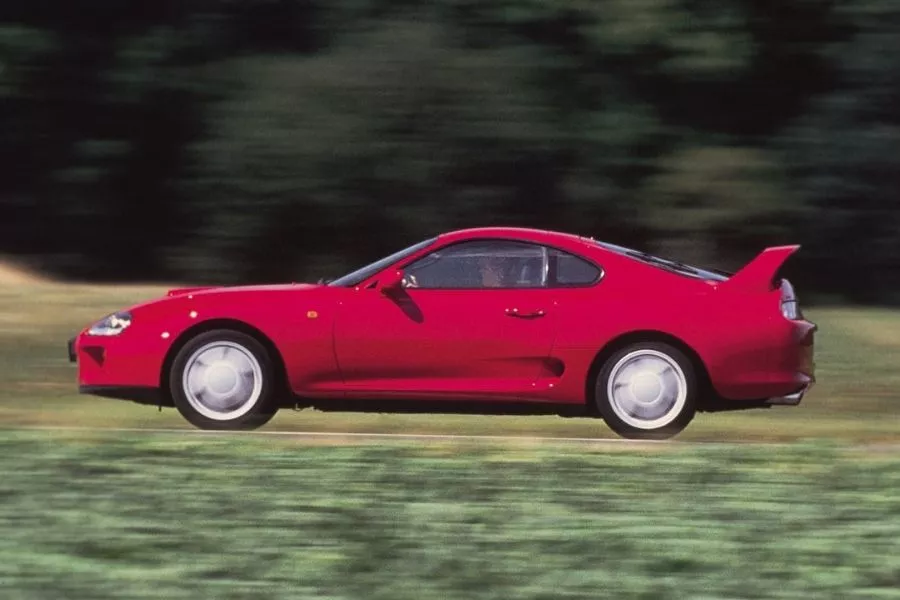
The Supra A80's design is just timeless
Do note though that for all of its strengths, the 2JZ does have some disadvantages. It is heavier than most engines, and it was costly to produce since it needed more material for its closed deck configuration. Another is that this mill’s timing belt tensioner bracket and oil pump seals were reportedly prone to braking. That is if you didn’t replace them after modding the engine to make more than its stock output.
The new A90 Supra: Modern limitations
If the 2JZ inline-6 engine was so great, then why didn’t Toyota reuse it to make the new A90 Supra? Well, there are a couple of reasons for this.
For starters, the engine in question is old. So old in fact that Toyota most likely does not have the casts and molds that are necessary to produce new 2JZ engines. It might be that these devices were already repurposed to make other engines, or were stowed away.
That said, they could reverse engineer existing 2JZs to make said casts, but that isn’t cheap and is far from practical. The same goes for retooling a factory or two just to make a sports car. If Toyota did decide to build new 2JZs, consideration also needs to go to a major redesign to make it compatible with existing emissions laws. This too is not cheap to do.
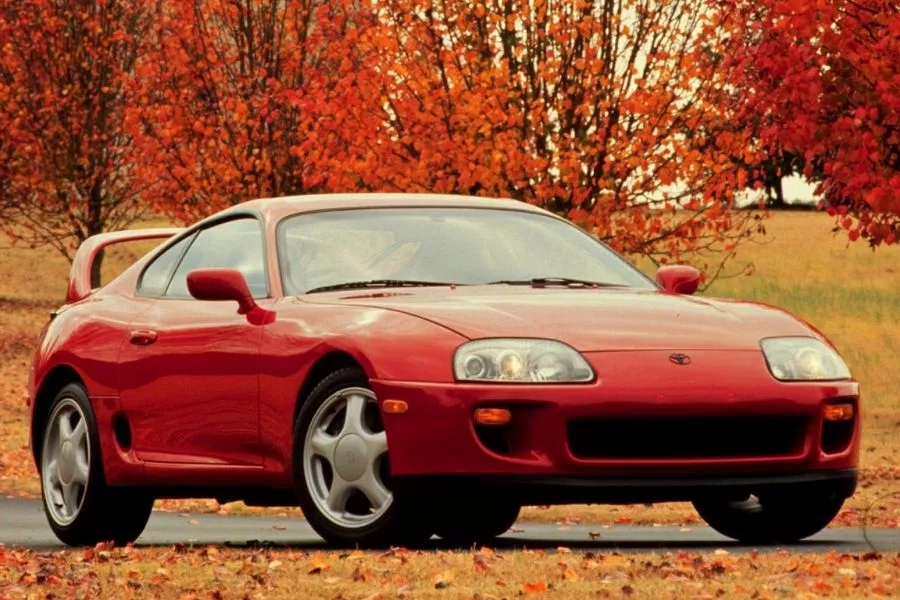
Its a hard to swallow pill, but a fully Toyota-made Supra won't be happening any time soon
Speaking of expensive things, developing a new sports car at the moment is not a sound business decision. This is especially true if a company doesn’t have a current model to build upon. So, in order to make the new A90 Supra, Toyota had to work with BMW. This was a more financially sound decision, but it did garner some criticism from die-hard A80 Supra fans.
Then again, A90 detractors should be aware that the BMW B58 engine that the new Supra uses is also a closed-deck inline-6. So, it is highly likely that it could be tuned for more power as well. The only issue that remains now is that Toyota is yet to release a manual version of the A90 Supra.
Be aware though that BMW introduced a Z4 variant with a manual gearbox back in 2019. So maybe, there might be a chance for the Supra to get one too. Don’t hold your breath for this to happen anytime soon though, since recent reports are saying that the Z4 MT was recently dropped in Australia and other markets (Europe) might follow soon.
For more car news, car reviews, and car maintenance tips, keep it here on Philkotse.com.
Know more about Toyota Supra 2026

The Toyota Supra is a 2-seater sports car that is available in the Philippines at a price range from Php 5,396,000 to Php 5,496,000. Only one variant is available locally which uses a BMW-sourced 3.0-liter inline-6 twin-scroll turbocharged gasoline engine that generates 335 Nm of torque and 500 Nm of torque. This engine is connected to an 8-speed automatic transmission as standard. Dimensions-wise, this iconic sports car spans 4,379 mm in length, 1,854 mm in width, and 1,294 mm in height, with a wheelbase of 2,470 mm and a ground clearance rated at 115 mm. In the local market, the Toyota Supra competes against the likes of Ford Mustang, Nissan 370Z, and Porsche 718.
>>> New and used Toyota Supra 2025 for sale in the Philippines
Toyota Supra Launch
Toyota Philippines introduced the Toyota GR Supra in the local market on July 9, 2019. This current generation is the successor of the A80 Supra, featuring a 3.0L twin-scroll turbocharged in-line 6-cylinder gasoline engine. The version available in the Philippine market is the European-spec type and is only offered in a single variant.
The prices depend on the color choice of the buyer. Only 16 Toyota dealerships in the country have been certified by Toyota Motor Philippines to market this Supra. According to the company, these dealerships are equipped and capable of servicing this sports car. They are the following:
Metro Manila
1. Toyota Commonwealth
2. Toyota Alabang
3. Toyota Makati
4. Toyota Otis
5. Toyota Manila Bay
6. Toyota Quezon Avenue
7. Toyota Pasong Tamo
Luzon
8.Toyota Bacoor
9.Toyota Batangas
10.Toyota La Union
11.Toyota Calamba
12.Toyota San Pablo
13.Toyota San Fernando
Visayas
14.Toyota Mabolo
15.Toyota Cebu
Mindanao
16. Toyota Davao City
Toyota Supra Exterior
This 2-seater Coupe offering from the Japanese manufacturer features a sleek body to allow the car to cut through the air. The front part of the vehicle gets all LED headlights, reverse lights, turn signals, daytime running lights, taillights, and fog lights. An auto high beam is also equipped in its headlights. The rear part of the vehicle features a dual exhaust pipe mounted just below the bumper.

This 2-seater Coupe offering from the Japanese manufacturer features a sleek body to allow the car to cut through the air
The GR Supra rides on sporty 19-inch forged aluminum wheels to maximize the grip at the back. The Toyota Supra prices in the Philippines vary depending on the model's color. It is available in eight colors: Matte Storm Gray, Deep Blue Metallic, Ice Gray Metallic, Silver Metallic, Lighting Yellow, Black Metallic, White Metallic, and Prominence Red. The Matte Storm Gray Supra is the most expensive.
Toyota Supra Interior
Inside the Toyota Supra, there's an 8.8-inch TFT LCD for the tachometer and speedometer. The cooling is handled by the car’s push-type dual-zone climate control. It allows the occupants to have their own desired temperatures.
In the center part of this performance car, there’s an 8.8-inch widescreen TFT display with Bluetooth and USB capabilities. The Supra is also equipped with a JBL 12-speaker HiFi surround sound system.
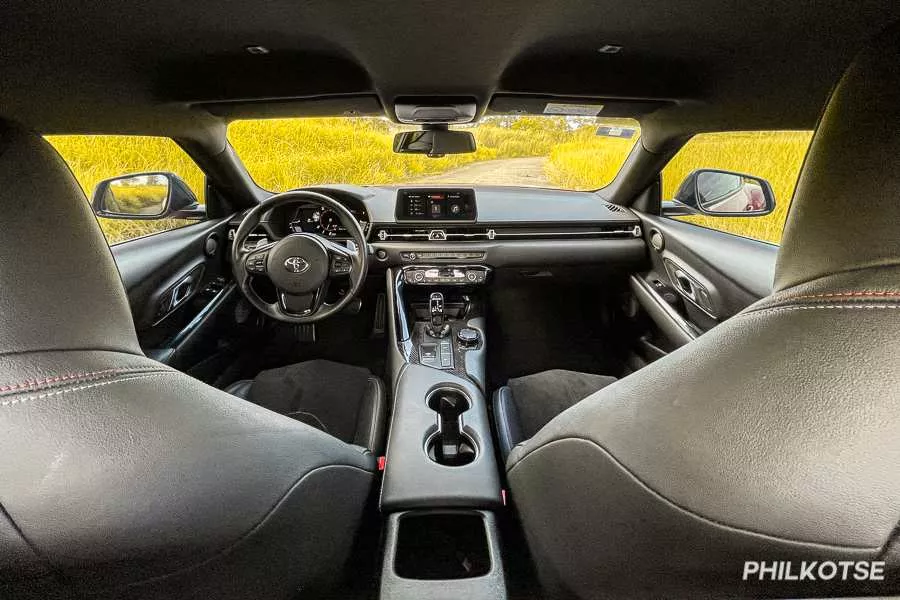
Inside the Toyota Supra, there's an 8.8-inch TFT LCD for the tachometer and speedometer
The leather-wrapped steering wheel comes with a 3-spoke design and paddle shifters. It also contains audio controls, telescopic adjust function, manual tilt, and cruise control. The driving position is excellent – low, and the standard seat wraps around the driver's back, and it comes with adjustable side bolsters.
Overall, Supra’s interior has material quality and tactility.
Technology & Safety Features
Some of the tech features available in the Supra are cruise control, push start button, integrated sport drive, 8-way adjustable seat, electric-assist power steering, electric parking brake, back monitor, and auto retract side mirrors. It also comes with a navigation system.
The car's safety features include a day and night rearview mirror, driver and passenger airbag, Anti-lock Braking System, brake assists, EBD, seat belt warning, crash sensor, door ajar warning, front and side-impact beams, traction control, and Vehicle Stability Control system.
In terms of security, the Toyota GR Supra features central locking, an engine immobilizer, an anti-theft device, power door locks, and an anti-theft alarm.
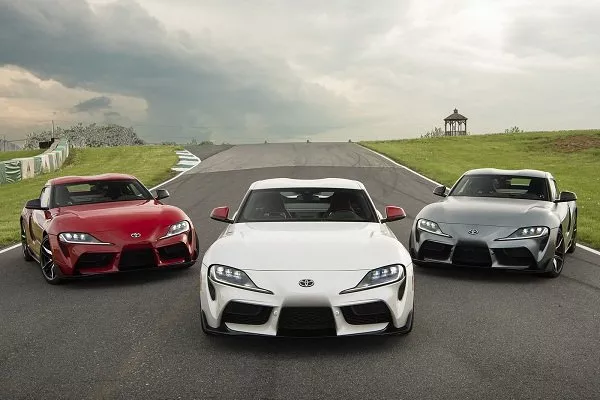
In terms of security, the Toyota GR Supra features central locking, an engine immobilizer, an anti-theft device, power door locks, and an anti-theft alarm.
Platform & Chassis
The Toyota Supra sits on BMW’s Cluster Architecture – the same underpinning used in Z4. It is the main reason why it has the same dimension and chassis as its German counterpart roadster.
This 2-seater Coupe from Toyota has a wheelbase of 2,470 mm, a length of 4,379 mm, a width of 1,854 mm, and a ground clearance of 115 mm.
The Toyota GR Supra is equipped with a Double-joint McPherson Strut for the front suspension, and the rear setup is handled by the multi-link suspension for the rear. A limited-slip differential is also featured in this car for its rear axles.
The stopping power is provided by the 4-piston Fixed Caliper Front Ventilated Disc Brakes and 1-piston Floating Caliper Rear Ventilated Disc Brakes.
Engine & Drivetrain
Aside from the platform, the Toyota Supra also shares the same engine, running gear, and gearbox as its German counterpart roadster. Sitting under the hood is a Toyota-tuned 3.0L Twin-Scroll Turbocharged gasoline engine. The unit produces 335 horsepower and 500 Newton-meter of torque. The engine power is delivered to the rear wheels via an 8-speed automatic transmission. It propels this performance car from 0 to 100 km/h in 4.4 seconds. The top speed is 250 km/h.
If you want to learn more about this sporty car, don't forget to read in-depth Toyota Supra review on Philkotse.com.
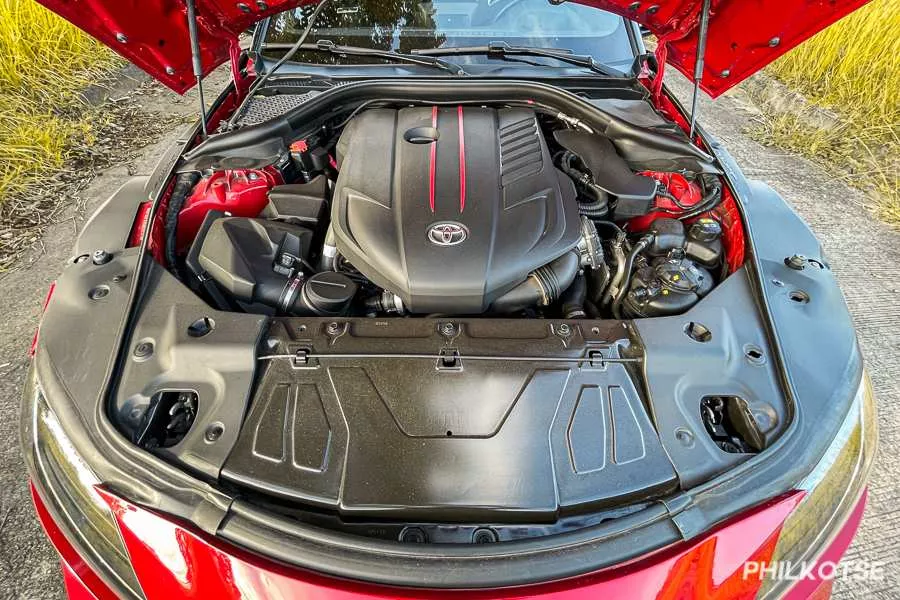
The Toyota Supra Philippines also shares the same engine, running gear, and gearbox as its German counterpart roadster
Available colors for the Toyota GR Supra 2025 Philippines are Prominence Red, Black Metallic 2, Lightning Yellow, Silver Metallic 5, Ice Gray Metallic, Deep Blue Metallic, and White Metallic.
The Toyota GR Supra is still one of the best options in the market if you want to experience a thrilling sports car driving experience. However, it doesn't get a manual transmission like the Nissan 370Z.
Toyota Supra 2025 Price List
| Variants | Price |
|---|---|
| Toyota GR Supra 3.0 Turbo Inline-6 AT (Prominence Red) | ₱5,396,000 |
| Toyota GR Supra 3.0 Turbo Inline-6 AT (Black Metallic 2) | ₱5,456,000 |
| Toyota GR Supra 3.0 Turbo Inline-6 AT (Matte Avalanche White Metallic) | ₱5,456,000 |
| Toyota GR Supra 3.0 Turbo Inline-6 AT (Matte Storm Gray Metallic) | ₱5,496,000 |
Toyota Supra Pros & Cons
Pros
-
Impressive powertrain performance
-
Offered in various color options
-
Unmistakable design
Cons
-
No manual transmission
-
The use of BMW technologies might throw some off
-
Visibility can be improved
Toyota Supra FAQs
1. How much does a Toyota Supra 2025 cost in the Philippines?
The Supra 2025 price is 5,396,000 Php for the prominence red color and 5,496,000 Php for the avalanche white metallic color.
2. What are the dimensions of the Supra 2025?
The dimensions of Supra are 4,379 mm in length, 1,854 mm in width, and 1,294 mm in height.
The type of Toyota Supra is a Coupe with 2 seaters.
4. What is the top speed of a 2025 Toyota Supra?
The top speed of the Supra is 250 km/h.
5. Is the Supra automatic?
Yes, the Toyota Supra is transmitted by an 8-speed automatic transmission.
₱ 4,990,000 - ₱ 5,050,000
ExploreRecent posts
- Fast and Furious Supra auction Jun 22, 2021
- Toyota GR Supra A91-CF Edition Jun 07, 2021
- More powerful 2021 Toyota Supra in Horizon Blue debuts Apr 13, 2021






